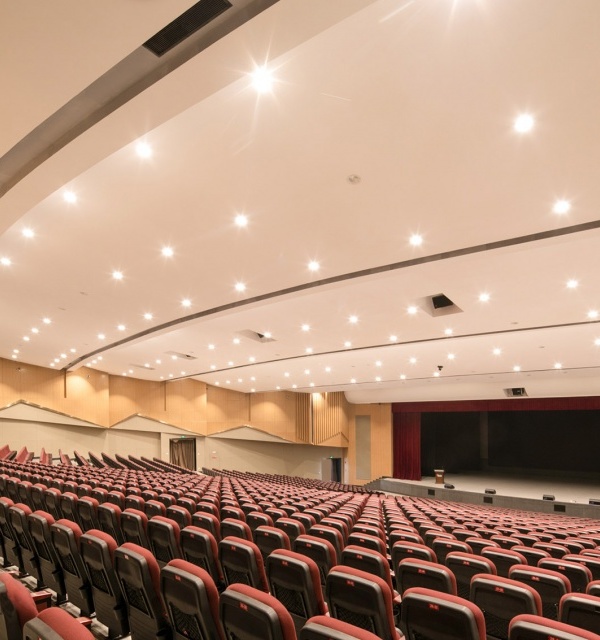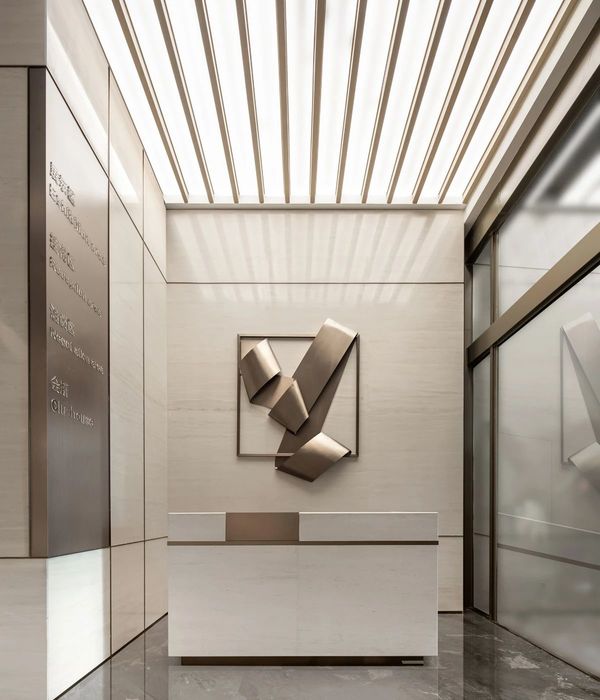Architects:Gradolí & Sanz
Area:19827ft²
Year:2019
Photographs:Mariela Apollonio,Bruno Almela
Manufacturers:Cerámica La Esperanza,Cooperativa Ladrillera,Cristalería Crevillente,GRUPO VALSECO,Junckers,Manolo García,Marti Cots,Morata,SOCYR 99,Salvador Gomis,Serpa
Architects:Carmel Gradolí, Arturo Sanz
Collaborating Architects:Fran López, José Luis Vilar, María Navarro
Clients:Zubi Real State S.L.
Quantity Surveyors:Francisco Vallet
Engineering / Breeam Consultants:Zero Consulting
Green Advisor:Alfons Ventura
Acoustic Advice:Silens servicios y tecnología acústica S.L.
Landscaping:Gustavo Marina
City:Paterna
Country:Spain
***The work we present is the first phase of the global project.This first phase is made up of 10 classrooms and kitchen spaces, facilities and storage spaces.The second phase will host the entrance and administration spaces, teachers and meeting rooms.***
THE BUILDING AND ITS SURROUNDINGS. HOW TO GET THERE. The building is located on the borderline of the Valterna residential area, in the municipality of Paterna (Valencia), on a strip intended for public service buildings and facilities located between the residential buildings and the En Dolça ravine, which separates Valterna from the urban expansion areacalled La Pinada, owned by the same owners as the College.
One of the first decision of the projectwasplacing the main entrance on the riverside and not from the city side. It must be taken into account that, given the type of education, the students will initially be arriving from all over the metropolitan area of Valencia, so most of them will be coming by private transport, until such a time the new neighbourhood La Pinada will be developed and most of the users of the school wouldbe coming from there. Placing the student entrance facing the road andlooking out onto the city would cause the collapse of traffic on this street that is already congested. The proposal is based on the development of a parking lot on the other side of the riverbed so that the entrance is away from this road and awaiting the development of the new neighbourhood.
The ravine is incorporated into the project, recognising its role as a natural element that is the backbone of the territory and overcoming the vision of ravines as something negative and dangerous that weighs in our make-believe culture.
Children enter the school crossing a pine forest by raised wooden walkways, peeking at the school through the treetops.Parents will be able to take advantage of the backwaters of this route as a meeting and rest place when they take or pick up their children.Children do not disappear behind a wrought iron gate, there is a transition and a preparatory journey to get to school ... and the city vanishes behind
THE INTERIOR SPACES. The building has been deformed to adopt the shape of an "S" thus configuring two exterior spaces: an access plaza to the west and a playground to the east, based on the premise that two exterior spaces with two different orientations provide greater flexibility than a single space.
All classrooms overlook the ravine and the pine forest. From all the rooms the visual connection with nature is the protagonist and the center of attention, now that there is no blackboard or teacher's table. The classrooms are distributed in five areas to which students have free access according to their interests and needs: sensory area, practical life area, language area, maths area and cultural studies area.
The entrance to each classroom is through a lobby with lockers and benches where the children take off their shoes and remove their coats. The low-rise arch in the wall indicates that we are entering spaces designed for the size of a child.
For better lighting and ventilation, we have designed triple height vertical spaces which we call solar collectors, that are placed in a central position and provide additional space, as well as a cross visual connection between classrooms.
Each classroom is complemented externally by a covered terrace, a small amphitheater, a fountain and a deciduous tree. When the weather permits, the classroom is opened to the outside and the tree, with its seasonal changes, becomes an additional classmate.
The project grows like an organism, as each cell takes on its own shape according to its needs and then rejoins and interacts with the other cells. Now that the classrooms were arranged in a fan-like shape, the relating space that connects them is not only a functional place of passage, but, with its extensions, its nooks and crannies and its balconies and walkways over the outdoor courtyard, it becomes a meeting, work and play space. An agora facing the exterior completes this tour of spaces for relationship.
In every space you’ll find corners designed for the scaled-down size of children: taking advantage of lofts above the toilets in the classrooms, beneath the landings of the stairs, next to windows at floor level. Spaces that are not accessible to adults due to their reduced height, become a redoubt and a sanctuary for the state of being we call childhood.
THE OUTDOOR SPACES. The playgrounds and garden areas (the eastern courtyard, the terraces to the west and the pine forest on the other side of the ravine) are designed or maintained as nature spaces: roots, trunks, branches, dry leaves, pine cones, asparagus in spring and wild mushrooms in autumn are their components. These are not aseptic spaces. There is no lawn, much less artificial turf. The idea is for the students to interact with nature, not to create a green decor. Nor are there sport grounds or soccer fields; it is about creating spaces for relationships, calm and egalitarian between genders. The slopes are used for generating ramps, slides, stairs and climbing walls, balconies and walkways, shelters and caves... And when it rains, when it really rains, one can watch the torrential water flowing through the ravine.
THE MATERIALS. Massive use of materials with a smaller ecological footprint: terracotta and wood. The terracotta in the 2-foot-thick load-bearing walls made with perforated brick, conventionally not suitable to be left exposed, in the three-threaded solid brick vaults, also structural, in the pavements. There is wood in the structure and covering panels on ceilings, the interior and exterior walls and the carpentry of doors and windows.
Concrete is only used in foundations and steel in singular pillars and railings. There is no plastering work, no false ceilings or false floors, no panelling. Everything is visible, the brick wall is structure, partition and cladding, with its texture, with its defects. The fixtures are visible, you can follow their layout throughout the building, you can understand how everything works, how it is mounted, how it was built. The building is the first didactic material of the school.
And everything under the undulating mantle of the green roof, a meadow that will descend, when the second phase is completed, to lean against the perimeter fence, which covers, insulates and provides thermal inertia, protecting the entire building from the sun and the rain. The construction wants to disappear, to go unnoticed under the green mantle which is the real facade when we look from the city, from a distance, from our computers when we fly with Google Earth.
Project gallery
Project location
Address:C. Melissa, 46, 46980 Lloma Llarga Paterna, Valencia, Spain
{{item.text_origin}}












